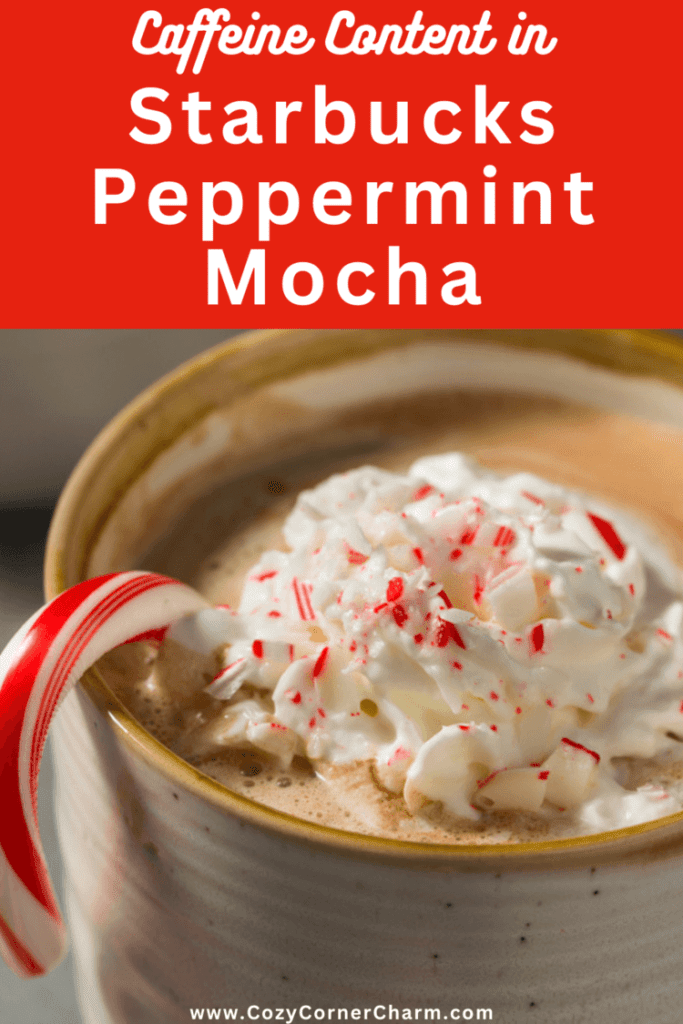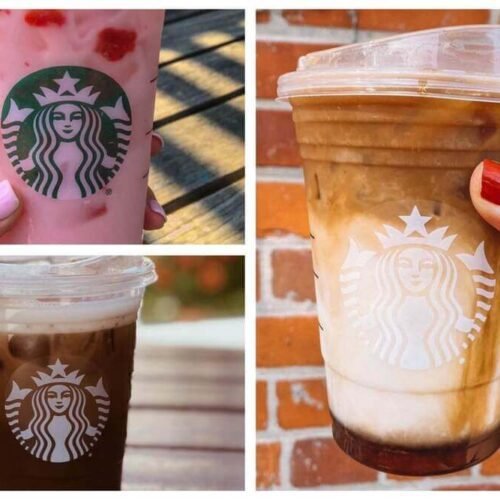Hey there, coffee enthusiasts and peppermint mocha lovers! As the holiday season rolls around, coffee shops like Starbucks are buzzing with the introduction of holiday drinks that are both festive and flavorful.
Among these, the Grande Peppermint Mocha stands out as a signature Starbucks coffee that perfectly captures the essence of the holidays. After all, when you combine premium coffee, rich chocolate, and peppermint flavoring, what’s not to love?
But, as we cozy up with our favorite winter beverage, a question often pops up: is there caffeine in peppermint mocha? Well, let’s dive straight into the answer—yes, peppermint mocha typically does contain caffeine. The caffeine comes primarily from the coffee or espresso base used in the drink.
Now, let’s break down what makes this festive treat tick and how you can enjoy it, caffeine and all!

Is There Caffeine in Peppermint Mocha?
Yes, there typically is caffeine in peppermint mocha. At the very core of peppermint mocha lies its coffee or espresso base, the primary source of caffeine in your cup. This isn’t just any coffee, though.
Depending on your choice of espresso or coffee, you’re not only choosing the strength of your drink but also the level of caffeine.
Espresso, known for its concentrated form, packs a more potent caffeine punch in a smaller volume compared to regular brewed coffee. This means that your peppermint mocha can vary significantly in caffeine content based on the choice of coffee alone.
The Sweet Touch: Chocolate or Cocoa
While the coffee or espresso base might be the main act in the caffeine content show, don’t overlook the supporting role played by chocolate or cacao powder. Chocolate naturally contains caffeine, albeit in smaller quantities.
When added to pumps of peppermint syrup, it contributes to the overall caffeine level, enhancing not just the flavor but also the energizing effect of the coffee drink.
The type of chocolate used (dark, milk, or cocoa powder) can also influence the caffeine content, with darker chocolates generally containing more caffeine.
The Flavor Star: Peppermint
Peppermint is the only main ingredient without caffeine. It’s responsible for the refreshing kick that balances out the richness of chocolate and the depth of coffee.
Whether you’re using peppermint syrup, extract, or even natural peppermint leaves, this ingredient is all about adding flavor without affecting the caffeine content of your mocha.
Caffeine Content: What to Expect
Given the combination of coffee or espresso and chocolate, a standard peppermint mocha can contain anywhere from 75 mg to over 150 mg of caffeine per serving.
This range is influenced by several factors, including the type of coffee or espresso used, Robusta or Arabica coffee, the brewing method, and even the specific pumps of mocha sauce.
For context, a typical 8 oz cup of coffee has about 95 mg of caffeine, making peppermint mocha a comparable, if not slightly stronger, choice for your caffeine fix.
Here’s how much caffeine you can expect in your regular Starbucks peppermint mocha:
| Drink Size | Caffeine Amount |
| Short 8 fl oz | 90 mg |
| Tall 12 fl oz | 95 mg |
| Grande 16 fl oz | 175 mg |
| Venti 20 fl oz | 185 mg |
Here’s how much caffeine you can expect in a Starbucks Iced Peppermint Mocha:
| Drink Size | Caffeine Amount |
| Tall 12 fl oz | 95 mg |
| Grande 16 fl oz | 175 mg |
| Venti 20 fl oz | 265 mg |
Factors Influencing Caffeine Content
The journey to your perfect cup of peppermint mocha is influenced by a variety of factors. Let’s explore these factors in more detail:
Type of Coffee or Espresso
The choice between coffee and espresso is more than just a flavor preference; it significantly impacts the caffeine concentration. Shots of espresso are known for their rich intensity. They deliver a higher caffeine content in a smaller serving size compared to regular brewed coffee.
For example, a shot of espresso typically contains about 63 mg of caffeine. On the other hand, an 8-ounce cup of regularly brewed coffee generally contains around 95 mg of caffeine.
The type of coffee bean (Arabica vs. Robusta) also matters, with Robusta beans containing almost double the caffeine of Arabica beans. For example, On average, Robusta beans have around 2.7% caffeine content, while Arabica beans have around 1.5% caffeine content.
Brewing Method
The way your coffee or espresso is brewed can also affect caffeine levels. Methods like French press, cold brew, or drip can extract different amounts of caffeine, even when using the same amount of coffee grounds.
Espresso machines apply high pressure to quickly extract coffee, which concentrates both flavor and caffeine in a small shot.
Serving Size
The size of your peppermint mocha plays a significant role in your caffeine intake. A larger cup means more coffee or espresso and, consequently, more caffeine.
Note: When comparing an espresso-based peppermint mocha to one made with brewed coffee, the volume difference can be misleading. Despite its smaller size, an espresso shot packs a stronger caffeine punch.
Health Considerations
While the festive cheer of peppermint mocha is hard to resist, it’s important to consider its caffeine content, especially for those with sensitivity or specific dietary restrictions.
Caffeine Sensitivity
Individual tolerance to caffeine varies greatly. Some people may experience jitters, anxiety, or sleep disturbances even with small amounts of caffeine.
If you know you’re sensitive to caffeine, it’s wise to monitor your intake and opt for lower-caffeine versions of peppermint mocha.
Moderation is Key
For the general population, moderate daily levels of caffeine are considered safe and can even offer health benefits, such as improved concentration and energy levels.
However, moderation is crucial to prevent negative side effects. According to the US Food & Drug Administration, it’s recommended that adults limit their caffeine intake to about 400 mg per day, equivalent to about four 8-ounce cups of coffee.
Customizing Your Peppermint Mocha
Creating a peppermint mocha that aligns with your caffeine preferences and dietary needs doesn’t mean compromising on taste. Here are some tips to customize your drink.

Decaf Options
Choose decaf coffee or decaf espresso as your base. This is the simplest way to enjoy the rich flavors of peppermint mocha without the caffeine.
Decaf peppermint mocha has come a long way in terms of taste, offering a satisfying alternative for those looking to reduce their caffeine intake.
Adjusting Chocolate and Peppermint Ratios
Playing with the ratios of chocolate and peppermint extract can not only adjust the caffeine content (especially if you’re using chocolate with a higher caffeine content) but also tailor the flavor to your liking.
More chocolate will result in a richer peppermint mocha frappuccino, while real peppermint provides a refreshing kick.
Experiment with Milk Choices
The type of milk used can also transform your Starbucks peppermint mocha drink experience. While it doesn’t affect the caffeine content, switching between dairy and plant-based milks can alter the texture and flavor profile of your drink.
You can try skim milk and get a skinny peppermint mocha if you’re watching your calorie intake, or try soy milk, almond milk, or coconut milk.
Finally, you can add whipped cream for even more indulgent peppermint mocha lattes. This won’t affect the caffeine amounts in your iced coffee.
Overall, peppermint mocha does contain caffeine, thanks to its coffee or espresso base. But the good news is, with a little tweaking, you can adjust the caffeine level in this espresso-based beverage to suit your needs.
So, go ahead and enjoy this perfect drink, whether you’re looking for a little caffeine boost or just in it for the holiday cheer. Cheers to enjoying peppermint mocha your way!
If you want to make your own delicious peppermint mocha, check out this better-than-Starbucks peppermint mocha recipe, and go here to learn is Starbucks Peppermint mocha dairy-free.



Leave a Reply